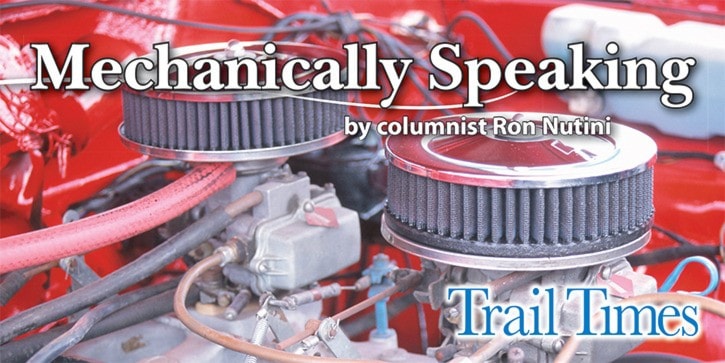The turbocharged engine has become commonplace. You pretty much cannot buy a diesel engined vehicle without a turbocharger. Now many vehicle models feature a turbocharged gasoline engine as their performance leader.
It was not long ago that Ferrari and BMW stated that they would not use turbocharged engines in their vehicles. Never say never. BMW has gone head over heals with turbos (they do not sell a vehicle without a turbo other than the all electric i3) and now Ferrari has a turbocharged sports car; the 488 GTB.
So why all the fuss? Turbocharging has been around since the beginning of the internal combustion engine. As with almost all technology someone thought of the idea a long time ago but implementing the technology was not practical. There were barriers. Materials were not available. Parts could not be made to the required tolerances.
Theoretically a turbocharged engine can be more fuel efficient than an equivalently powerful naturally aspirated engine.
That last statement requires some explanation.
An engine requires oxygen and fuel to create an explosion to make power. The size of an engine determines how much oxygen and fuel it can breath in and explode.
A naturally aspirated engine can theoretically only breath in as much oxygen as atmospheric pressure (100 kpa) will force into it. A turbocharged engine uses the waste heat and momentum of the expelled exhaust to spin a small turbine connected to a compressor wheel in your engine’s intake passageway.
The compressor will raise the pressure of the air being fed to your engine. 150 to 200 kpa is common. More air in the engine means more oxygen. Add the correct amount of fuel and a smaller turbo engine can produce the same power as a larger naturally aspirated engine.
Now, when you don’t need the extra power and you take your foot off the floor, your 2.0 litre 4 cylinder turbo can sip less fuel than your 4.0 litre V6.
The turbo engines of the seventies and eighties were less than successful at winning over buyers. They had some teething problems.
Firstly their power delivery was less than linear. Have you heard the term turbo lag? If you were cruising along and wanted to pass another vehicle it would always take too much time for the turbo to start spinning fast enough to build pressure. When the power did develop it would come in a rush. It was hard to drive smoothly.
Early turbo engines had more mechanical failures. The turbocharger by design is subject to a very harsh environment. It runs red hot and spins up to 100 000 revolutions per minute. It must be lubricated and cooled. Early turbocharged vehicles required a more disciplined owner.
Engine oil was the turbos lubricant as well as the coolant. Letting the turbo spin down after spirited driving was mandatory. This would allow the turbo to cool and then when shut down it would not spin too long without oil pressure.
A turbocharged engine in many cases required more frequent oil changes and better quality oils.
The 21st century turbocharged engine is a marvel.
Power delivery is smooth and more linear than naturally aspirated engines. Turbo failures are way less common.
The turbo assembly is now cooled by engine coolant and engine oil. Advances in design and materials have made turbo ownership a pleasure.
The jury is still out on fuel mileage though.
Many turbo owners do not get that extra fuel mileage they think they should. (You have to keep your foot out of the go pedal).
It is hard to resist blowing by those naturally aspirated dawdlers on the way up the Kootenay Pass. At 1500 metres a normally aspirated engine is down to breathing 80 kpa while a turbo engine will still be breathing full boost pressure.
Trail’s Ron Nutini is a licensed automotive technician and graduate of mechanical engineering from UBC. E-mail: nutechauto@telus.net
